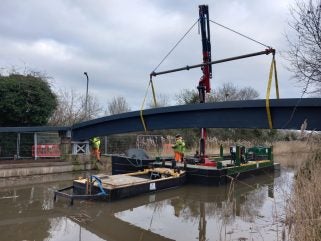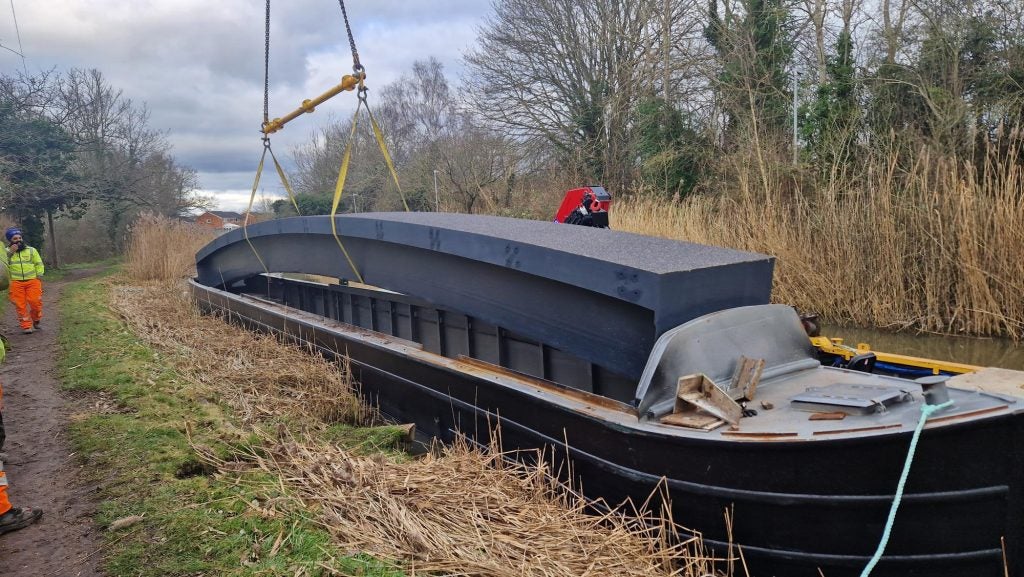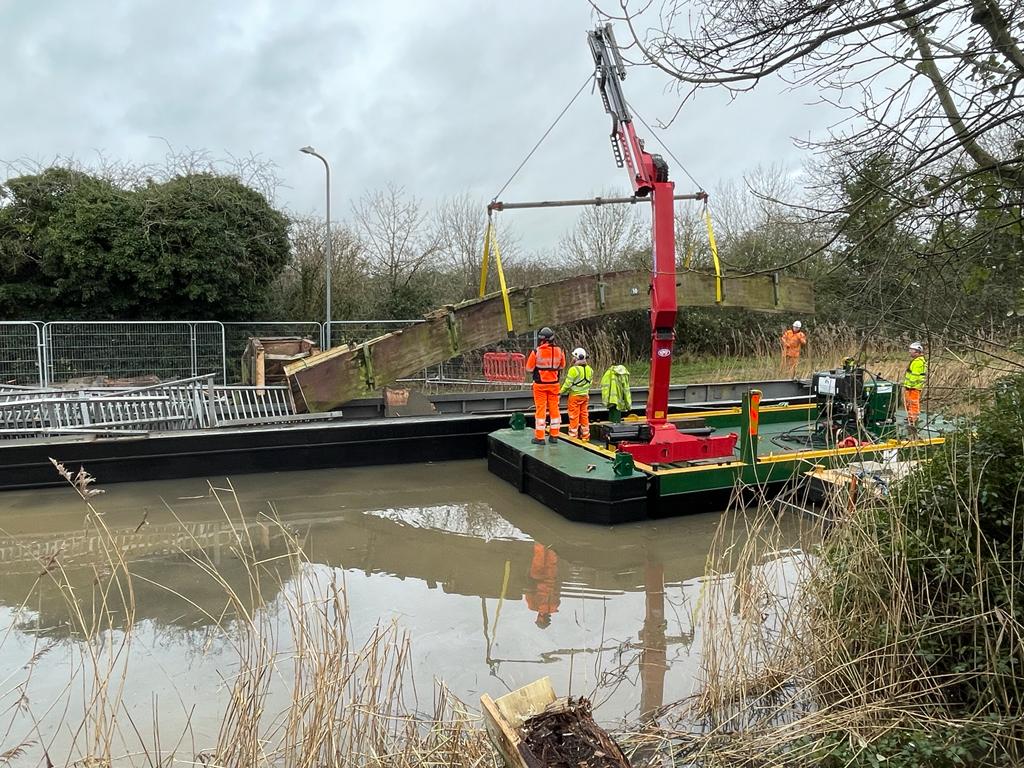
Replacing two footbridges on the Droitwich Canals proved to be a formidable challenge, requiring large-scale, specialized lifting operations. When contractors Griffiths were tasked with the job, they called in marine engineering experts The Rothen Group to assist with the intricate process.
The Droitwich Canals, which flow through the historic spa town of Droitwich, have long been a green haven for walkers and a popular cruising ring for boaters. Reopened in 2011, the canals connect the Droitwich Barge Canal and the Droitwich Junction Canal, offering scenic routes through the Mid-Worcestershire Ring. Continuous maintenance is required to keep the canals in good condition, especially for two frequently used footbridges located at King George Playing Fields and Little Hill Court.

Measuring 18 meters each, these wooden bridges were showing signs of wear and tear and, in January 2024, it was decided both would be removed and replaced. Griffiths was chosen for the project, but the task proved anything but straightforward. The footbridges weighed around seven tons each and, due to surrounding housing developments and local parks, there was no land access for the heavy lifting equipment needed to carry out the job.
Thomas Roberts, site manager at Griffiths, explained, “Dismantling and replacing bridges is a difficult task in any setting, but when they span a body of water, the challenges increase exponentially. We knew we’d need specialized equipment and expertise to complete the work.”
To overcome this, Griffiths turned to The Rothen Group (TRG), a marine engineering firm with a strong track record of providing solutions for bridge works. The Rothen Group brought in a 26ft crane pontoon capable of lifting up to 2 tons at a 12-meter radius, suited for the canal’s narrow and sometimes inaccessible locations. The pontoon also featured adjustable jack legs, providing a stable working platform while the work was carried out on the water.

“Dismantling the old structures proved challenging, especially from a health and safety standpoint. The wood had rotted, making the bridges even more difficult to take down. However, we were able to tackle this using scaffold towers mounted on the pontoon and extra harnesses off the crane for the first stage of the works,” said Ian Rothen, founder, The Rothen Group.
As part of the deconstruction, all discarded materials were loaded onto a 70-foot historic carrying boat, known as a hopper, to be disposed of off-site. The hopper was then used to transport the new bridges to their designated locations, where they were lifted and securely fixed into place using the pontoon crane.
New ramps and handrails were also installed, with the final touches carried out from the same floating platform.
Despite the scale of the task, the installation of the two new footbridges was completed within two days each, and the entire project took 11 weeks. Rothen emphasized the challenge of fitting 18-meter bridges onto a 21-meter boat but credited his team’s experience for the smooth completion of the project.
“The size of the bridges made this one of the largest lifts we’ve ever done,” he said. “But with our expertise, we managed to complete the job without a hitch.”
Thanks to the combined expertise of Griffiths and The Rothen Group, the Droitwich Canals’ footbridges have been replaced, ensuring the waterway remains a safe and attractive route for both walkers and boaters for years to come.






